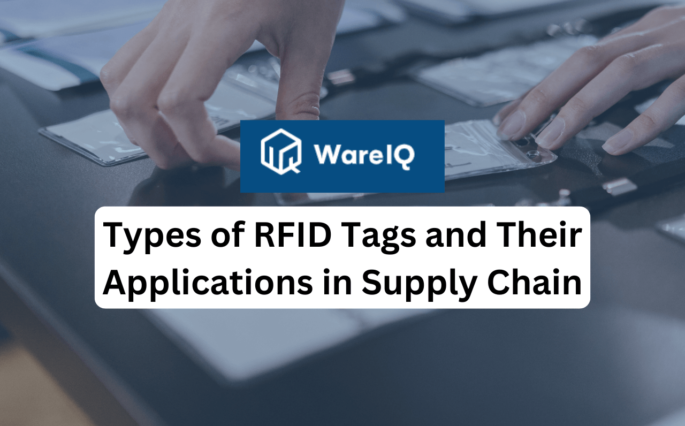Understanding CIF in Export: Exploring the Concept


The term “CIF”, standing for Cost, Insurance, and Freight, is a crucial concept within international trade and logistics, embodying a widespread method of transacting goods across global borders.
CIF is a pivotal term in international shipping contracts, indicating that the seller bears the costs, insurance, and freight of delivering goods to a specified port of destination. This incoterm has profound implications for the financial and logistical arrangements between buyers and sellers in international trade, affecting risk management, cost distribution, and contractual obligations. This guide will delve into the specifics of CIF, its operational dynamics, the benefits it offers in export transactions, and its integral role in facilitating seamless global trade operations. Understanding CIF is essential for businesses engaged in or considering entering the export market, as it lays the groundwork for successful international trade strategies.
- What Is CIF?
- Demystifying the Process of AD Code Registration
- Role of CIF in Shipping and Export
- What Are the Benefits of CIF?
- Conclusion
- Frequently Asked Questions About CIF
- What does CIF stand for in shipping terms?
- Who pays for shipping under CIF terms?
- Is insurance coverage under CIF extensive?
- How does CIF differ from FOB (Free On Board)?
- Can CIF be used for any mode of transport?
- What happens if goods are damaged under CIF terms?
- Are there any customs duties included in CIF?
What Is CIF?
CIF, an abbreviation for Cost, Insurance, and Freight, is a term used extensively in international shipping to describe a scenario where the seller is responsible for covering the costs, insurance, and freight of sending goods to a designated port of destination. This incoterm ensures that the seller delivers the goods past the ship’s rail at the port of departure, effectively transferring the risk to the buyer from that point onward.
Under a CIF agreement, the seller is obligated to arrange for the transportation of goods via sea to the buyer’s specified port, obtain and pay for the minimum insurance coverage against the buyer’s risk of loss or damage to the goods during transit, and cover all costs associated with these processes. The CIF term is one of the most commonly used in international trade, particularly beneficial in scenarios where sellers have better access to shipping and insurance options than buyers. It simplifies transactions for buyers in foreign countries by placing the onus of arranging most logistics and insurance on the sellers, making it a preferred method for international trade transactions, especially for those new to the export business.
Demystifying the Process of AD Code Registration
While the process of AD Code registration is not directly related to the CIF (Cost, Insurance, and Freight) terms in international shipping, exporters must understand it as part of their broader engagement with international trade logistics and compliance. The Authorised Dealer (AD) Code is a significant requirement for exporters in many countries, facilitating customs clearance and foreign exchange transactions. Here’s how the AD Code registration typically unfolds:
1. Open a Current Account with an Authorised Dealer Bank
The first step involves opening a current account specifically for your export/import transactions with a bank that the country’s central bank authorised to handle foreign exchange transactions. This bank is known as an Authorised Dealer.
2. Gather Necessary Documents
Collect all required documents for the AD Code registration. This usually includes your company’s legal registration documents, proof of identity and address of the business owners or key management personnel, and the Importer Exporter Code (IEC), among others.
3. Submit an Application to the Bank
Complete the AD Code registration form provided by the bank. This form requires detailed information about your business and its foreign trade activities. Along with the completed form, submit all the gathered documents to the bank for processing.
4. Bank Processes the Application
The bank will verify the submitted documents and the information provided in the application. This process might include additional inquiries or requests for further documentation to ensure compliance with foreign exchange regulations and anti-money laundering standards.
5. Issuance of the AD Code
Once the verification is complete and the application is approved, the bank will issue the AD Code specific to your company. This code is linked to the current account opened for your export/import transactions and is required for customs clearance for your shipments.
6. Registration with Customs Authorities
Finally, you need to register the issued AD Code with the customs authorities, particularly at the ports where you plan to ship your goods. This registration is crucial for smooth customs clearance for your export and import operations.
The AD Code is a pivotal element for exporters, ensuring that all export-related transactions are streamlined and compliant with the country’s foreign exchange and customs regulations. It’s imperative when engaging in CIF transactions, as it supports the financial and regulatory aspects of international shipping and trade.
Role of CIF in Shipping and Export
The CIF (Cost, Insurance, and Freight) term plays a significant role in the dynamics of international shipping and export, defining specific responsibilities and risks for sellers and buyers engaged in global trade. Here’s how CIF impacts the shipping and export process:
1. Financial Responsibilities of the Seller
Under CIF terms, the seller is responsible for covering the costs associated with transporting goods to the designated port of destination, including freight and insurance costs. This financial obligation ensures that buyers are not burdened with the complexities and uncertainties of arranging transport and insurance from another country.
2. Risk Transfer
While the seller bears the cost and arrangement of transport and insurance, the risk of loss or damage to the goods is transferred from the seller to the buyer once the goods are loaded onto the ship at the port of shipment. This delineation of risk helps both parties manage their liabilities more effectively.
3. Insurance Coverage
A key component of CIF is that the seller must procure minimum insurance coverage for the goods during transit. This requirement protects the buyer against potential losses during the sea voyage, providing a safety net that might be less readily available or affordable to the buyer directly.
4. Simplification for Buyers
For buyers, significantly those new to importing, CIF terms simplify the process of acquiring goods from overseas. Since the seller arranges for shipping and insurance, the buyer does not need to navigate the complexities of international logistics, customs regulations, and insurance procurement.
5. Compliance and Documentation
CIF terms require the seller to provide the buyer with all necessary documents for receiving the goods at the destination port, including a bill of lading, insurance policy, and invoice. This ensures that the buyer has all the required documentation for customs clearance and taking delivery of the goods.
6. Predictability of Costs
CIF terms provide buyers with predictability in costs, as the price agreed upon includes shipping and insurance up to the destination port. This can help buyers budget and plan their imports.
CIF’s role in shipping and export is crucial for smoothing the transaction process, ensuring clear risk and responsibility demarcation, and facilitating international trade, especially for those who may need more experience or resources to manage overseas shipping and insurance arrangements. It underscores the importance of understanding in global commerce, enabling businesses to make informed decisions that align with their operational capabilities and risk management strategies.
What Are the Benefits of CIF?
The CIF (Cost, Insurance, and Freight) incoterm provides several benefits to both buyers and sellers engaged in international trade, optimising the export process and offering a degree of financial and operational security. Here are the key benefits of utilising CIF in shipping and export transactions:
1. Simplified Logistics for Buyers
CIF terms greatly simplify the buyer’s logistics process. The seller assumes responsibility for arranging and paying for transportation to the destination port and for obtaining insurance coverage. This simplification is particularly advantageous for buyers unfamiliar with international shipping processes or those who need to establish relationships with shipping and insurance providers.
2. Risk Management
Under CIF, the seller is required to purchase insurance on the goods being shipped. This ensures that the goods are covered against loss or damage during transit up to the destination port, providing the buyer with a layer of risk management that might otherwise require additional effort and expense to secure.
3. Cost Predictability
CIF terms offer buyers predictability in costs, as the price quoted by the seller includes not only the cost of the goods but also the cost of freight and insurance up to the destination port. This all-inclusive pricing aids buyers in budgeting and financial planning for their imports.
4. Enhanced Seller Control
For sellers, CIF terms allow for greater control over the shipment process. They can select shipping and insurance providers based on their preferences or existing partnerships. This can lead to operational efficiencies and potentially lower costs due to volume discounts or negotiated rates.
5. Compliance Assurance
With the seller responsible for arranging transport and insurance, they’re also tasked with ensuring compliance with export and shipping regulations, including the provision of necessary documentation. This can reduce the regulatory burden on the buyer and ensure smoother customs clearance.
6. Strengthened Buyer-Seller Relationship
CIF can strengthen the relationship between buyers and sellers by demonstrating the seller’s willingness to assume additional responsibilities and risks. This commitment can enhance trust and lead to more stable and long-term business relationships.
Overall, the CIF incoterm is designed to balance the needs and responsibilities of both parties involved in an international transaction, providing a framework that supports efficient, secure, and predictable trade activities. Its benefits are especially pronounced in fostering global commerce, making it a popular choice among exporters and importers alike.
Conclusion
The CIF (Cost, Insurance, and Freight) incoterm is a critical component in the lexicon of international trade, offering a balanced approach to managing the risks, responsibilities, and costs associated with shipping goods across borders. Its structured framework benefits both buyers and sellers by delineating clear roles in the logistics process, ensuring that goods are insured during transit, and providing cost predictability. For sellers, CIF terms allow control over the shipping process and the opportunity to leverage relationships with carriers and insurers. For buyers, especially those new to importing or those in regions where arranging international shipping and insurance might be challenging, CIF offers a simplified and secure means of procurement.
Understanding and effectively utilising CIF terms can significantly enhance operational efficiency, risk management, and financial planning for businesses engaged in global trade. As the landscape of international commerce continues to evolve, the importance of initiatives like CIF in facilitating smooth, predictable, and fair trade relationships becomes increasingly apparent. By demystifying the complexities of international shipping, CIF not only supports the growth and sustainability of global trade but also empowers businesses to expand their market reach with confidence.
Suggested read: Key Differences between FCA and FOB in Shipping Terms
Frequently Asked Questions About CIF
What does CIF stand for in shipping terms?
CIF stands for Cost, Insurance, and Freight. It’s an incoterm where the seller is responsible for covering the cost of shipping the goods to the designated port of destination, including insurance and freight charges.
Who pays for shipping under CIF terms?
Under CIF terms, the seller is responsible for paying the cost of shipping the goods to the port of destination and purchasing minimum insurance coverage for the shipment until it reaches the designated port.
Is insurance coverage under CIF extensive?
The insurance coverage under CIF terms is typically the minimum required to protect against loss or damage during transit. Based on their risk assessment, buyers may choose to purchase additional insurance for enhanced coverage.
How does CIF differ from FOB (Free On Board)?
Under CIF terms, the seller is responsible for the cost of shipping and insurance up to the destination port. In contrast, under FOB terms, the seller’s responsibility ends when the goods are loaded onto the ship at the port of origin, and the buyer assumes all costs and risks from that point forward.
Can CIF be used for any mode of transport?
No, CIF terms are specifically designed for sea or inland waterway transport. For other modes of transport, different incoterms, such as CIP (Carriage and Insurance Paid To), are more appropriate and offer similar responsibilities for the seller.
What happens if goods are damaged under CIF terms?
Suppose goods are damaged during transit under CIF terms. In that case, the buyer can claim compensation from the insurance company up to the port of destination, as the seller arranges the insurance as part of the CIF agreement. The claim process will depend on the terms of the insurance policy.
Are there any customs duties included in CIF?
No, CIF terms do not include customs duties, taxes, or other charges applied upon importation. The buyer is responsible for clearing customs and paying any applicable duties and taxes at the destination port.








